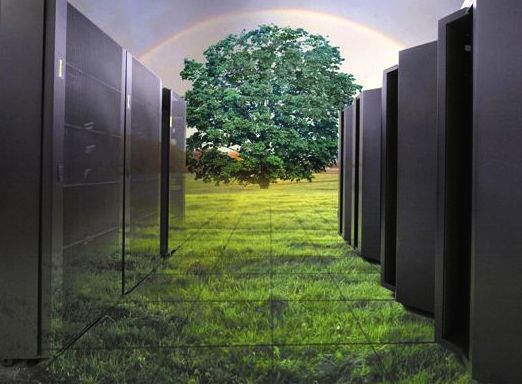Samsung used a CIO Forum in San Francisco (which it also hosted), to tout two new solid state drive (SSD) products.
And it also used the event to share industry insights into how to gain energy efficiency and save money by introducing SSD memory into the data centre.
Flash Data Centres
The 1 November forum coincided with the release of the Samsung SM843 and SM1625 SSD – also known as Flash – memory products; the SM843 reportedly can reduce energy consumption by 28 percent compared to previous generation SSDs.
Flash is also more energy-efficient than hard disk drives, which have to be kept spinning constantly in order to be ready when data needs to be retrieved from them. The attention to Flash memory comes amid growing concerns about the wasteful consumption of electricity in data centres.
As little as 6 percent to 12 percent of the energy consumed by data centres actually generates compute cycles, said Jim Elliott, vice president of memory marketing at Samsung Semiconductor, a unit of the South Korea-based Samsung. He cited McKinsey & Co. research quoted in a 23 September article in the New York Times, which he said made the issue of data centre energy waste “mainstream.”
 Elliott said the bulk of data centre energy consumption goes to redundancy measures such as keeping extra servers idling in case any of the production servers fail. And older servers use a disproportionate amount of electricity compared to newer ones.
Elliott said the bulk of data centre energy consumption goes to redundancy measures such as keeping extra servers idling in case any of the production servers fail. And older servers use a disproportionate amount of electricity compared to newer ones.
He cited an Intel study that indicated that 4 percent of servers in a typical data centre are at least five years old, that they also handle 4 percent of the compute workload but consume 60 percent of the energy that goes to servers.
Data centre energy consumption is also impacted by exponential increases in demand. Elliott said that the world creates 5 exabytes (EB) of new data every two days and that demand for storage capacity is forecast to reach 115EB by 2015, up from 23EB in 2011, for a compound annual growth rate (CAGR) of 47 percent. An exabyte is 1 billion gigabytes.
The number of servers is forecast by Gartner to grow at a CAGR of 10 percent to 45 million by 2015, he added. Furthermore Cisco research forecasts a 78 percent CAGR for the volume of mobile data traffic between 2011 and 2015.
“That’s the magnitude of the infrastructure that needs to keep up with that [demand],” said Elliott.
Storage Demand
Flash can offset some of that demand in storage, as Microsoft found when it introduced SSDs into some of its data centres, said Dileep Bhandarkar, chief architect of global foundation services for Microsoft. The company operates numerous data centres globally (he wouldn’t say exactly how many) for its Online Services division to deliver SharePoint, Exchange, Hotmail, the Bing search engine and other services.
“Ultimately, it comes down to TCO,” said Bhandarkar, referring to the total cost of ownership calculation for its project to introduce SSDs to deliver one particular application.
Overall, Microsoft improved performance by 30 percent with only a 10 percent increase in costs by introducing SSDs, he said, while also extending the life of servers before they needed to be replaced.
“The benefits for this particular app was such that it allowed us to postpone the purchase of additional servers and allowed us to get more performance from existing data centres,” said Bhandarkar.
While Flash can help reduce energy consumption, each company has to decide for itself how to introduce Flash into their IT infrastructure, said Joseph Unsworth, a Gartner analyst who participated in the CIO Forum.
“I think their biggest concerns are implementing it properly and efficiently so they get the best return on their investment,” said Unsworth, referring to his clients.
The SSD space is a growing and active market and prices are falling, but with so many players entering the market, there is inevitably going to be consolidation – or worse, some vendors could go out of business, abandoning customers, he said.
SSD is best suited for “read-intensive” apps that operate in a random input-output (I/O) environment, Unsworth said. But that covers a lot of ground including social media, high-speed electronic trading platforms, data warehousing, high performance computing and virtual desktop infrastructures.
Are you a repository of knowledge? Try our storage quiz!





